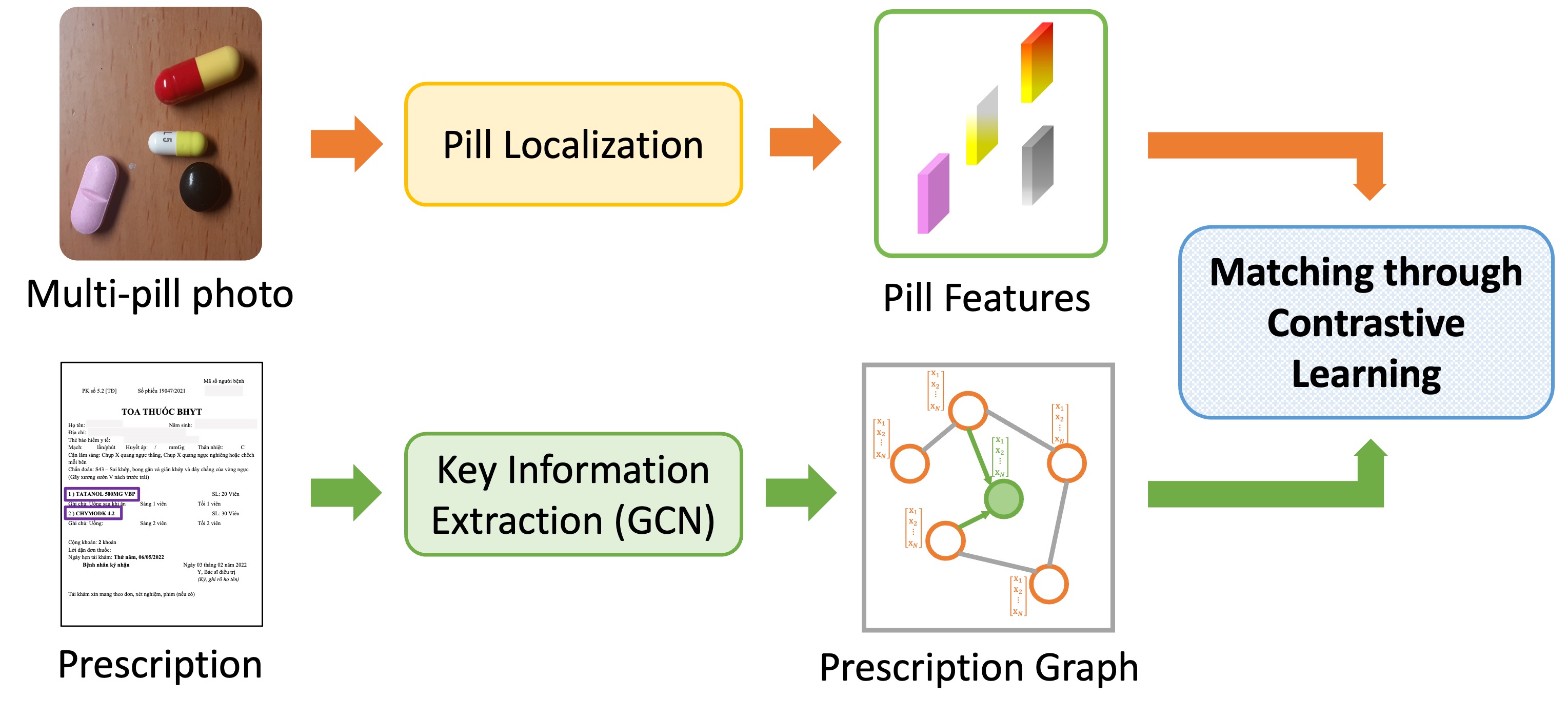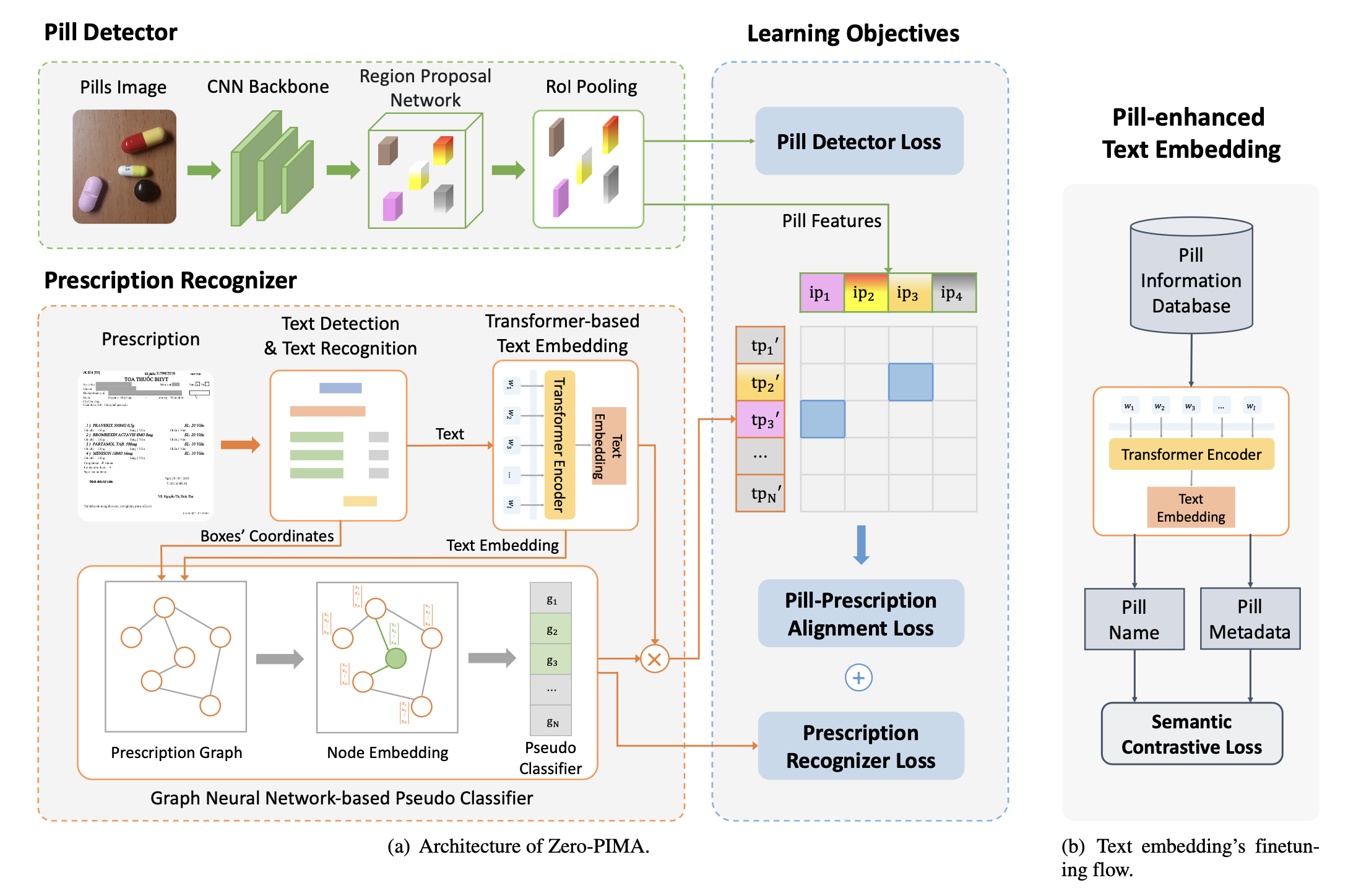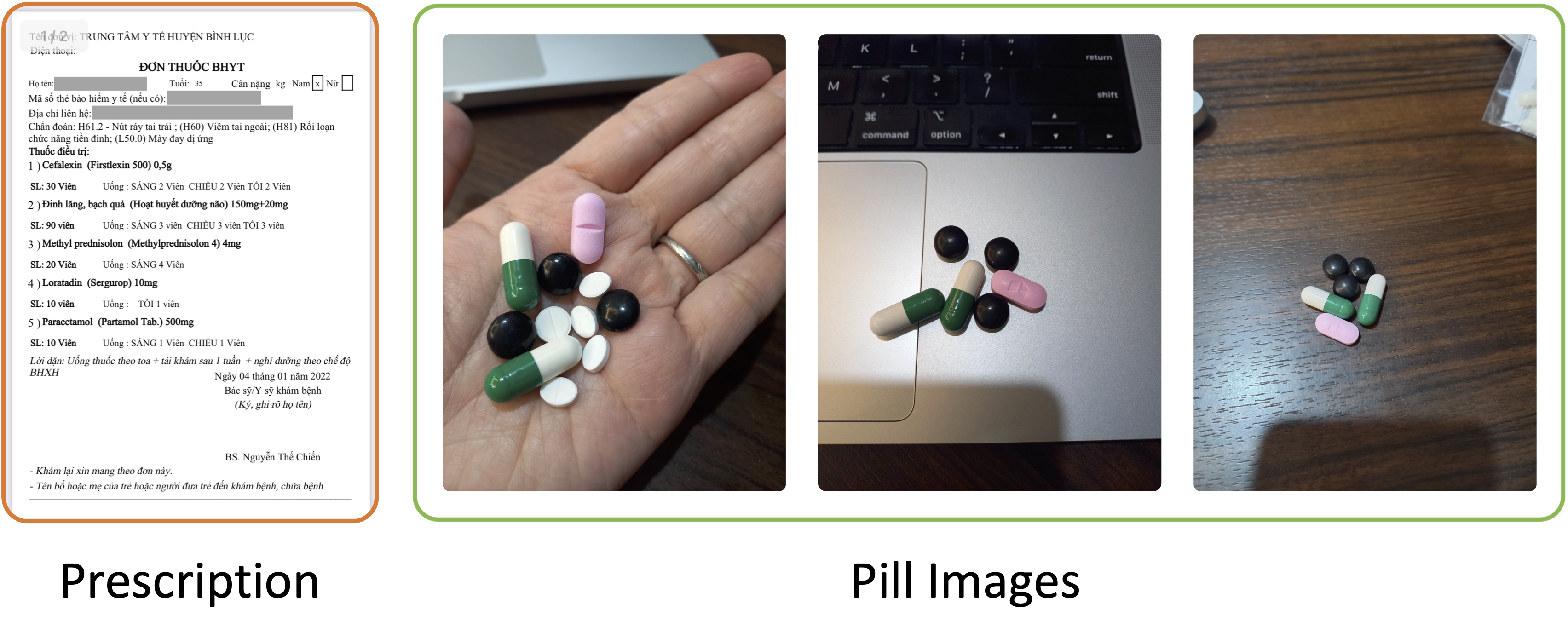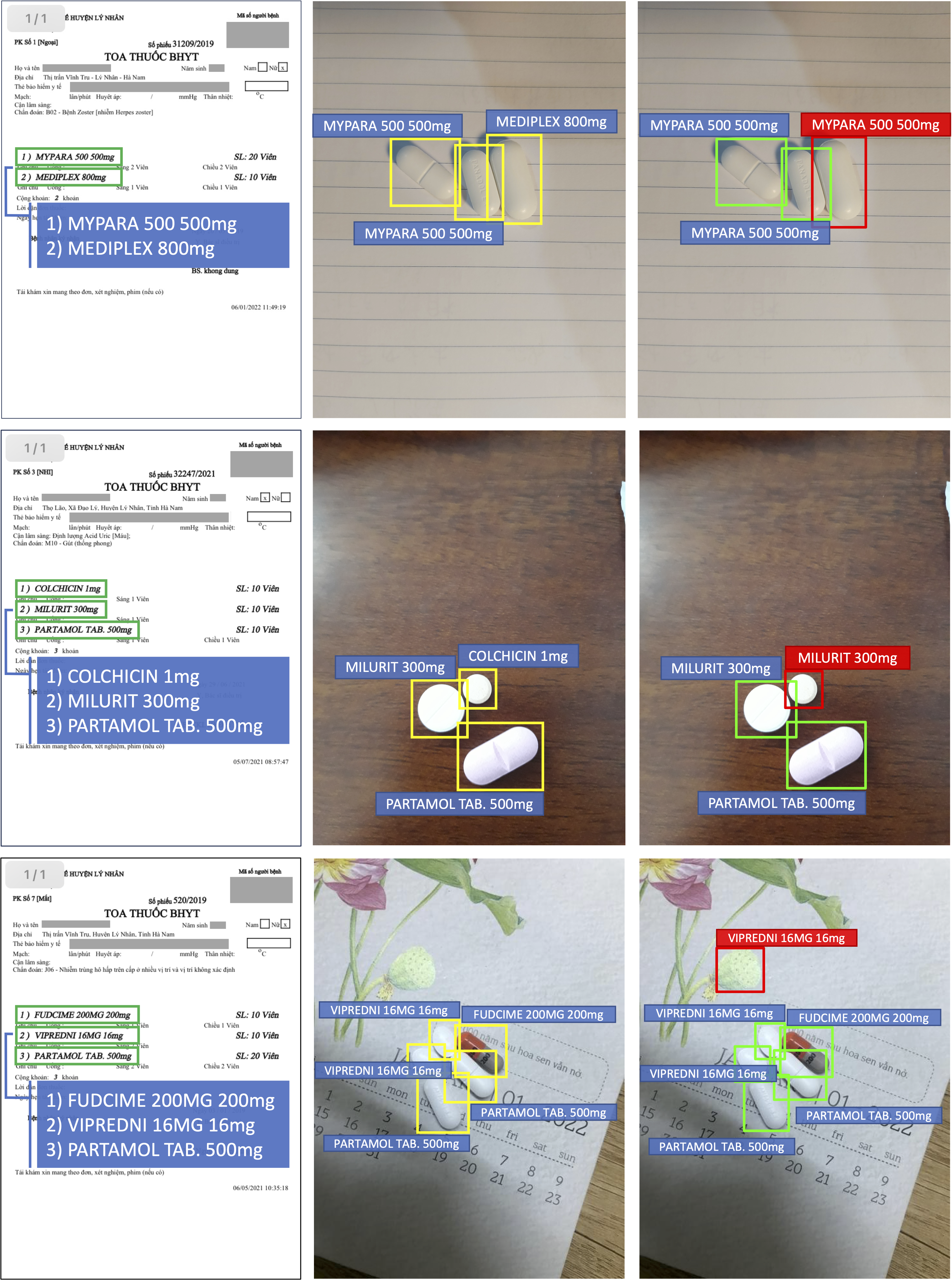Patients' safety is paramount in the healthcare industry, and reducing medication errors is essential for improvement.
A promising solution to this problem involves the development of automated systems capable of assisting patients in verifying their pill intake mistakes.
This paper investigates a Pill-Prescription matching task that seeks to associate pills in a multi-pill photo with their corresponding names in the prescription.
We specifically aim to overcome the limitations of existing pill detection methods when faced with unseen pills, a situation characteristic of zero-shot learning.
We propose a novel method named Zero-PIMA (Zero-shot Pill-Prescription Matching), designed to match pill images with prescription names effectively, even for pills not included in the training dataset.
Zero-PIMA is an end-to-end model that includes an object localization module to determine and extract features of pill images and a graph convolutional network to capture the spatial relationship of the pills' text in the prescription.
After that, we leverage the contrastive learning paradigm to increase the distance between mismatched pill images and pill name pairs while minimizing the distance between matched pairs.
In addition, to deal with the zero-shot pill detection problem, we leverage pills' metadata retrieved from the DrugBank database to fine-tune a pre-trained text encoder, thereby incorporating visual information about pills (e.g., shape, color) into their names, making them more informative and ultimately enhancing the pill image-name matching accuracy.
Extensive experiments are conducted on our collected real-world VAIPEPP dataset of multi-pill photos and prescriptions.
Through a series of comprehensive experiments, the proposed method outperforms other methods for both seen and unseen pills in terms of mean average precision.
These results indicate that the proposed method could reduce medication errors and improve patients' safety.

 An End-to-end Pill-Prescription Matching Framework
An End-to-end Pill-Prescription Matching Framework 


